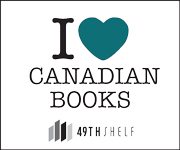Of course, I know Calgary in a different way. I lived there for the first 26 years of my life and I return every 1-2 years to visit my Dad, my cat, the house I grew up in, and take the drive to Banff to see my ailing Mother.
 I went back in early June this year, to a place I recognize less and less. Maybe it's from living in Toronto so long, I've forgotten just how incredibly aggressive the whole vibe is in Calgary. For the first time, I felt uneasy in my hometown. Walking down 17th Ave, on a sunny Sunday afternoon, I felt menaced. The quiet at my Dad's house, in an early 70s suburb backed by Nose Hill Park (at right**), was eerie more than comforting. I looked over my shoulder a lot. Driving, as Micallef put it, is "no fun. No fun." I saw some cyclists attempt to ride on these hostile streets, and my hats off to them. If all of those complaining about the lack of bicycle infrastructure in Toronto could see what these bold Calgarians deal with, they'd be amazed at how good we have it†.
I went back in early June this year, to a place I recognize less and less. Maybe it's from living in Toronto so long, I've forgotten just how incredibly aggressive the whole vibe is in Calgary. For the first time, I felt uneasy in my hometown. Walking down 17th Ave, on a sunny Sunday afternoon, I felt menaced. The quiet at my Dad's house, in an early 70s suburb backed by Nose Hill Park (at right**), was eerie more than comforting. I looked over my shoulder a lot. Driving, as Micallef put it, is "no fun. No fun." I saw some cyclists attempt to ride on these hostile streets, and my hats off to them. If all of those complaining about the lack of bicycle infrastructure in Toronto could see what these bold Calgarians deal with, they'd be amazed at how good we have it†.I did take a bit of issue with the Spacing post that went up later, only in that I felt the reach could have been a bit broader. I lived in one of the neighbourhoods just out of downtown, after moving out of my parents' house. And yes, they can be lovely. In fact, I returned to that neighbourhood several times during my last trip. Micallef mentions Crescent Heights, which was the aspirational housing of kids from the north-western suburbs. Mount Royal was where we wandered, after-bar, Elbow River in the moonlight. But go a little further and things change. Each neighbourhood homogeneously proclaims its decade as you move further away from the core, "mixed" architecture being an anathema. The ability to walk to much of anything is gone. My parents' house is 2km from the nearest grocery store. Try that with a bag-full of canned goods. It's not that the Calgarian suburbs are a nutritional desert; there isn't a convenience store any closer. It's just house, after house, after house. I'd like to see what Micallef would make out of this wasteland. The 'burbs are mandated to look uniform.
It's this sort of environment in which Monoceros takes place. The pressure for uniformity in the Calgary suburbs extends, too, to the people who live there. Calgary is hyper-masculine, and to step out of line is to become extremely vulnerable. There's little support for those who won't fall into place.
What I love about Monoceros, is how Suzette Mayr set a book in Calgary, without using any overt cowboy tropes. Mayr, interestingly, has most of the narrative take place in February. You'd think it would be difficult to write about a prairie winter, or perhaps monotonous to read about one, but Mayr's lucky to have Calgary to work with, with its ever-changing temperature. The Chinooks that roll in and out through Monoceros affect the moods and actions of the characters, like the Santa Ana winds do in a Raymond Chandler story.
If the weather in Calgary is totally unpredictable, the prejudices that run through the populous are easy to call. This is why Max and Walter hide their relationship (which is a marriage in everything but name, right down to the boredom of familiarity) for over a decade, to the point of maintaining separate residences in name only, lest they be fired from their shared Catholic high-school workplace. When Patrick Furey kills himself, it's partially due to the knowledge that navigating this world, when his classmates have begun to clue into his sexuality, will be too difficult. The boy he loves, Ginger, has gone cold, after conducting a secret affair. Ginger, too, knows the risks are too great. Calgary is a city infused with testosterone, and enforces a strict code of conduct. This isn't to say there aren't out people there, but to be out is sometimes a luxury that some can't afford. It's still this way; tall, thin, black-wearing friends of mine still get "fag-rolled" simply for looking like something other.
Monoceros is solidly a book about Calgary, even if it is rarely explicit about it. Mayr understands very well the hetero-normative crush of the suburbs, which take up more than 90-percent of Calgary's area, and at least as much of its collective consciousness.
*See, also: "No One Writes Books About Calgary."
**That photo, by the way, was taken at 8:30 pm in early June. When you leave for a while, it becomes wonderful and confusing how late the light stays.
†What Calgary does have, is a lot of off-road trails, which are more recreational in intent, though I suspect some do get used for commutes out of the suburbs.





No comments:
Post a Comment